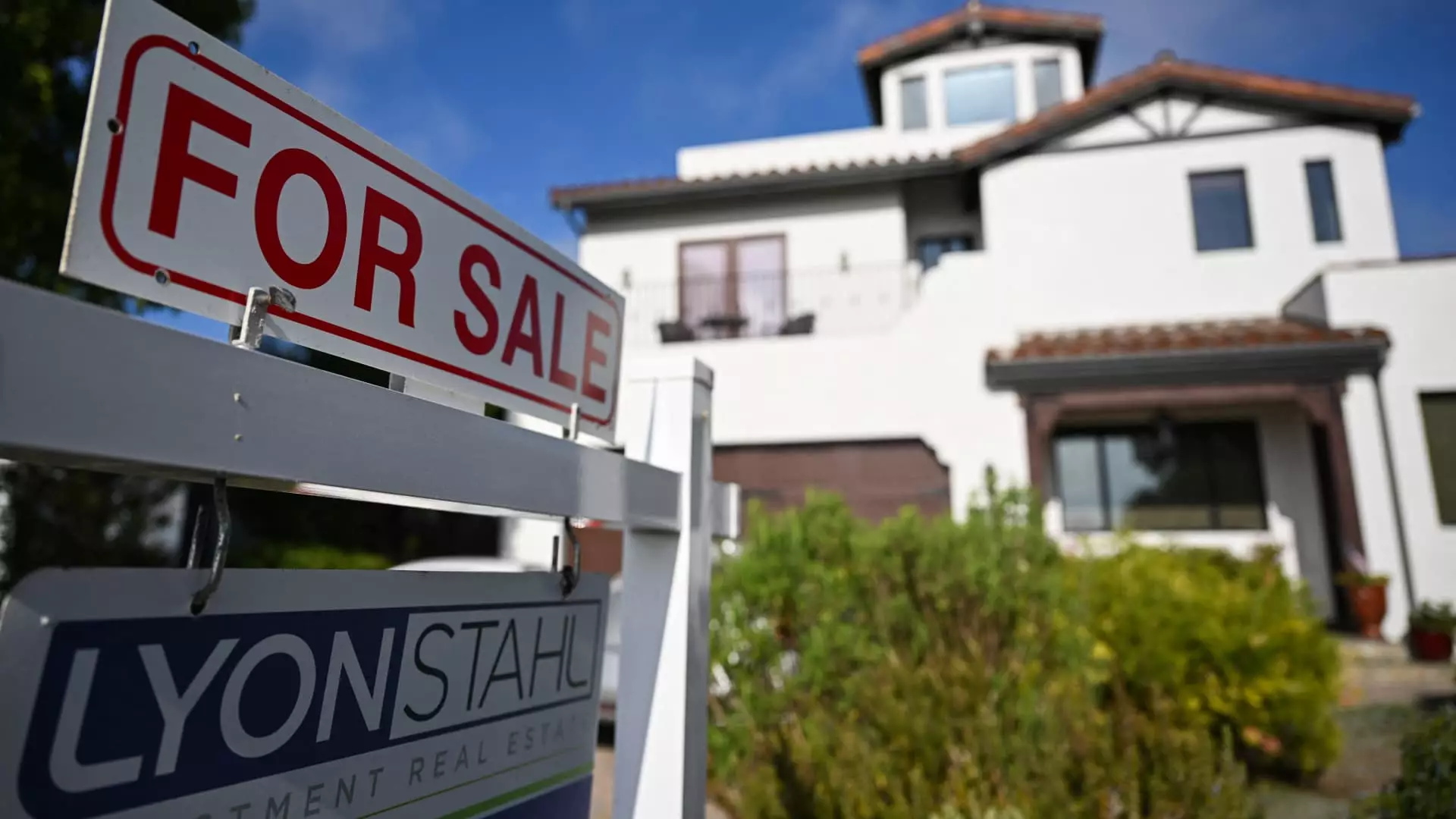The mortgage landscape finds itself at the mercy of political events, and Thursday’s sharp drop in mortgage rates serves as a prime example. Following a tariff announcement by the Trump administration, mortgage rates on 30-year fixed loans dove, marking a seismic shift with a 12 basis point reduction, landing at 6.63%. This decrease is significant — the lowest since last October — yet it’s crucial to dissect the implications and longer-term ramifications on the housing market. The relationship between mortgage rates and government policy highlights how financial markets can react with almost intuitive precision. When uncertainty permeates, investors instinctually move towards safer havens, such as bonds, leading to lower yields and, consequently, reduced mortgage rates.
However, we must question whether these fluctuating rates truly offer relief to prospective homebuyers. The reality is more nuanced; while declining rates may superficially appear beneficial, the challenges surrounding affordability and market dynamics present a grim outlook.
Homebuyers and the Crushing Reality of Affordability
Despite the nominal benefits of lower mortgage rates, the broader housing market tells a discordant story. Current data reveals that the average monthly payment for homebuyers is staggering, reaching a record high of $2,802 over the past month. These monetary figures starkly contrast with the 3.4% year-over-year increase in home sale prices, leading to a staggering financial landscape. On one hand, a slight easing in interest rates could be seen as a boon; on the other hand, the relentless increase in home prices means that approximately 70% of U.S. households — that’s about 94 million people — are effectively priced out of the market for a $400,000 home.
Further complicating this picture is an estimated median home price climbing to around $460,000 by 2025. The implications are dire. When you consider that to afford a $200,000 home under current interest rates, an annual income of at least $61,487 is required, it becomes evident that a substantial portion of the population is trapped in a cycle of economic exclusion.
Market Dynamics: Changing Listings and Buyer Sentiment
The spring housing market traditionally tends to be a vibrant time for real estate transactions, but current trends hint at a market struggling to find its footing. New listings have seen a jump of 10% year-over-year, but this surge does little to alleviate the pressing issue of affordability. Even more unsettling is the observation that homes are sitting idle in the market for increasingly longer durations. The escalating share of listings with price reductions is a harbinger of a cooling market.
Moreover, while specific regions, such as Jacksonville and Miami, are experiencing sharp declines in pending sales, other areas grapple with an influx of sellers eager to capitalize on market peaks. There’s a sense of apprehension in various sectors, particularly as individuals respond to economic fears about job security and potential instability in government roles. The perception that sellers are hesitant to compete for low-priced homes only exacerbates supply challenges.
The Ghost of Underbuilding and Future Expectations
An often-overlooked aspect of this housing crisis is the persistent underbuilding that has plagued the market since the Great Recession. Despite some signs of new inventory emerging, the quality and pricing fail to meet the demands of most eager buyers. Housing construction continues to lag, and with this continuing shortage, the price of existing homes is unlikely to see any meaningful reduction.
Investing in future possibilities becomes all the more critical. The policies surrounding housing construction and urban development must be revisited. Solutions that prioritize affordable housing without sacrificing quality are paramount. A comprehensive approach accounting for economic realities faced by the average American mortgage seeker is needed.
While the recent fluctuation in mortgage rates might herald some level of relief, a deeper analysis reveals a troubling picture for future homebuyers. The confluence of soaring prices, rigid income constraints, and lingering market uncertainties poses formidable barriers to homeownership. The political decisions that shape interest rates can sometimes feel like pulling the lever on a slot machine — exciting, yet fraught with unpredictability. Thus, it is crucial to approach the evolving housing landscape with a critical eye and advocate for practical solutions that prioritize affordability and accessibility — because right now, the precious American dream of homeownership has never felt less attainable.

